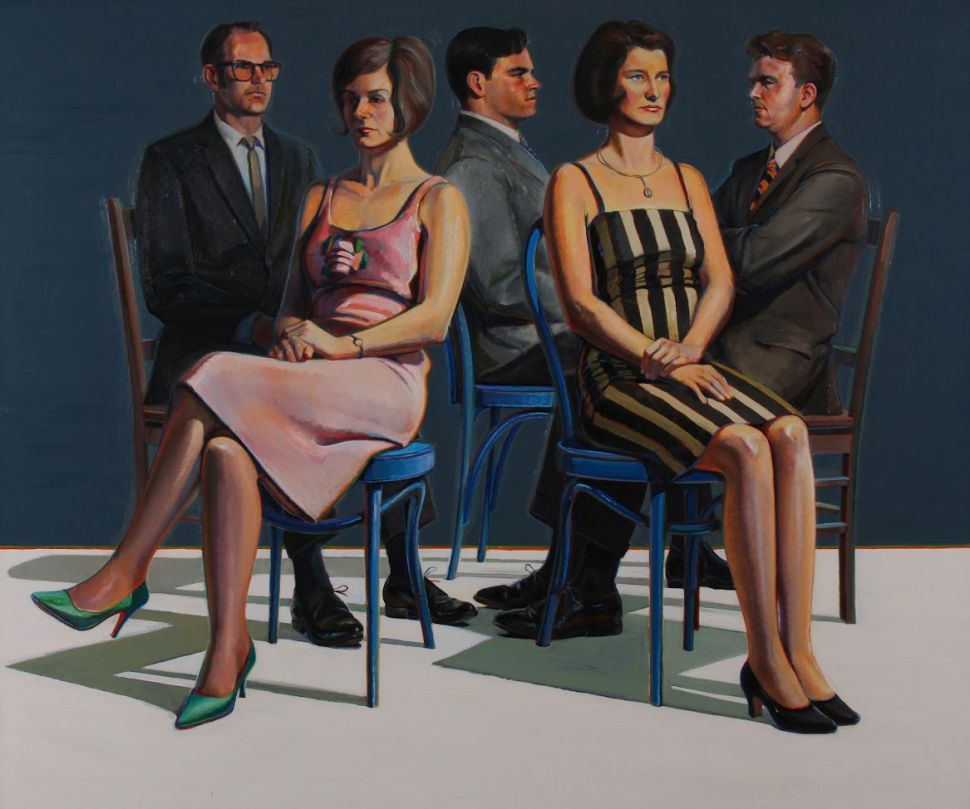Welcome to One Fine Show, where Observer highlights a recently opened exhibition at a museum not in New York City, a place we know and love that already receives plenty of attention.
Last year, an artificial intelligence program posted an image to Facebook with the sympathetic caption “This is my first cake! I will be glad for your marks,” under eighteen images featuring eighteen different fake humans and their nonexistent baked goods. The results, according to a study by Renée DiResta and Josh Goldstein, were legions of likes and interactions from real humans. Further data offered by shows like Is It Cake? would seem to suggest that humans cannot resist representations of cake, the stranger the better.
Wayne Thiebaud (1920-2021) was the master of such deceptions. His cakes are sliced, complete or lined up in rows of miniatures, but they always seem to pulse off the canvas with bombastic sensuality. The New Yorker once took him to Lady M on East 78th Street, where the cakes are intricate, but delicate, and he decried the “confectionery delights” as “un-American.” But let’s be clear: the man was not that interested in cake itself. As suggested by the title of his new retrospective at the Legion of Honor, “Art Comes from Art,” the show probes the extent to which his art was an exercise in self-described thievery, borrowing traditions from across the centuries as he worked up new experiments in pigment-based visual trickery.
The exhibition tracks his six-decade career across some sixty-five works, most of which fit into the category of still lifes, frequently featuring icing, cityscapes and other vistas that work a strange mélange of Pop and abstraction and intense portraiture. Thiebaud’s sitters are incapable of relaxation. The first painting that greets you in this exhibition, Betty Jean Thiebaud and Book (1965-1969), shows the artist’s wife holding her head in her hand like, “What is it now, Wayne?” As with so many of his figures, the lines that compose her are actually miniature rainbows if you look close enough, a confounding hint of the psychedelic within this otherwise glum and buxom matriarch.
SEE ALSO: U-Haul Gallery’s Mobile Model Takes Art to the Streets
But his lines are always like that, as if to suggest that we haven’t even scraped the surface of his sitters’ depths. Five Seated Figures (1965) is a group of three men and two women in full Mad Men regalia. They might be waiting for a sermon or for the beginning of a key party. Need I even mention that none of them are looking in the same direction?
I had been on the hunt for cake as I wandered this show, but it was the figures that kept bringing me back to them. It goes back to his proud stealing from the greats of art history. Girl with Pink Hat (1973) isn’t just topless and distant; she’s tapping into the same melancholy expressed by Édouard Manet’s Blonde with Bare Breasts (1878), as the catalogue points out. These emotions are profound because they’re eternal. Then you begin to notice the curious upturn of her nipples and recognize the angle from some of his landscapes. Thiebaud painted everything as a monolith, which means even the monoliths appear mundane. Laguna Rise (2003/2010/2012/2018) features a city on top of a hill that is definitely made of frosting. “Is it cake?” To Thiebaud, everything was.
“Wayne Thiebaud: Art Comes from Art” is on view at the Legion of Honor through August 17, 2025.

